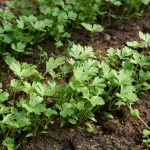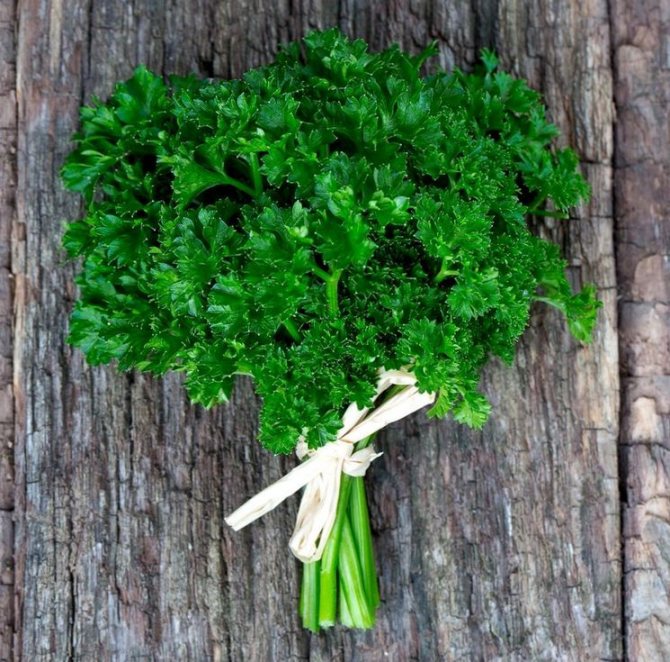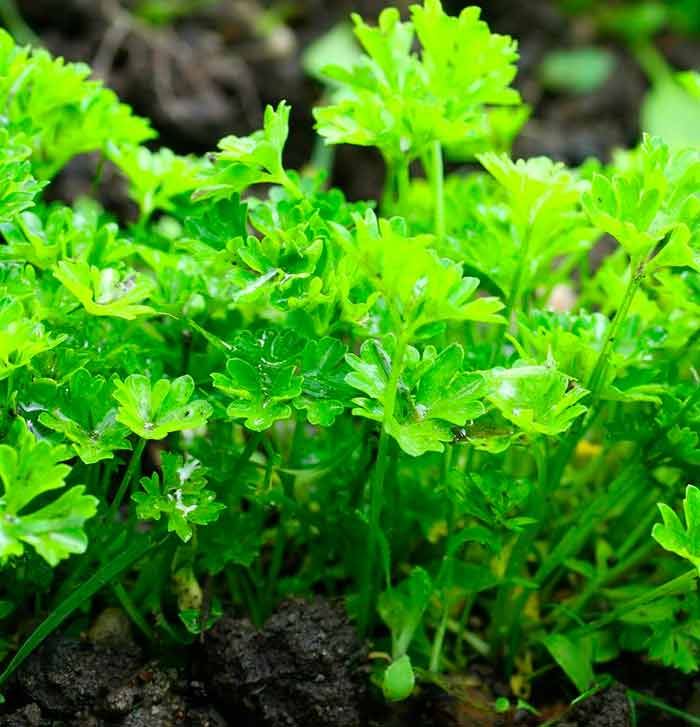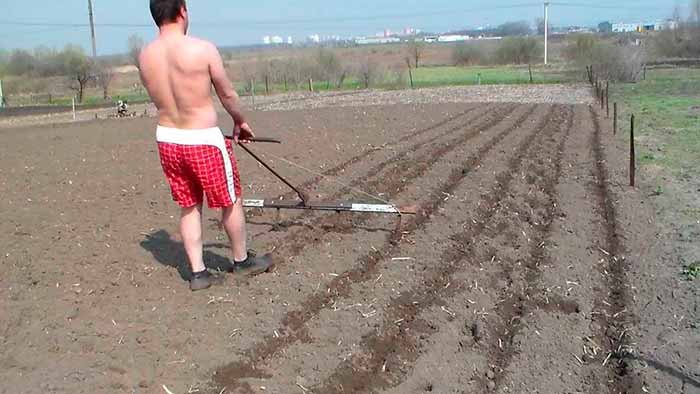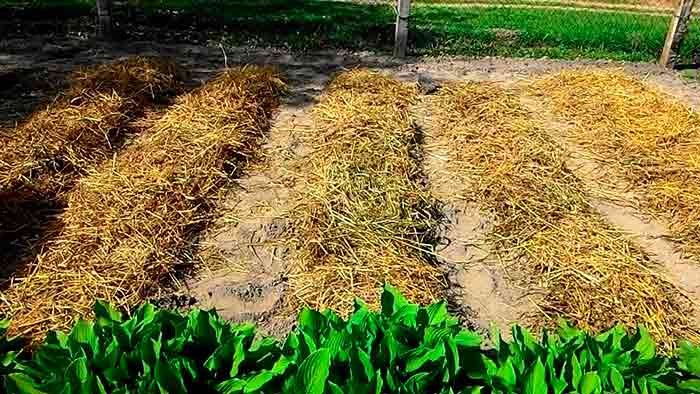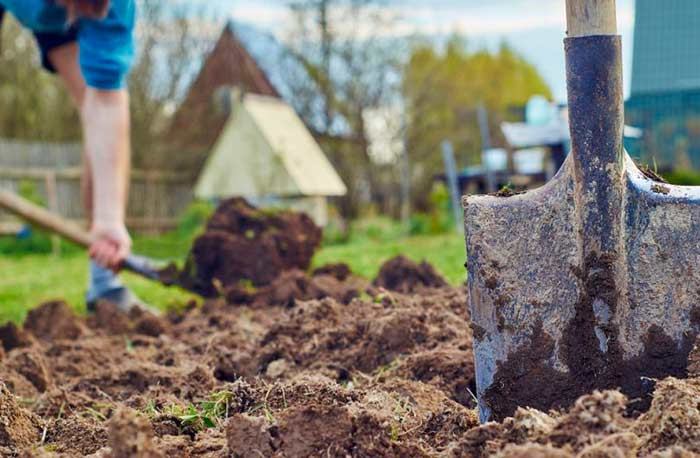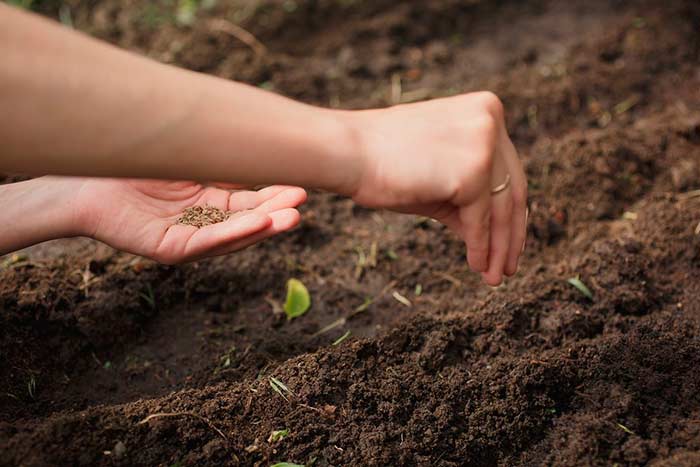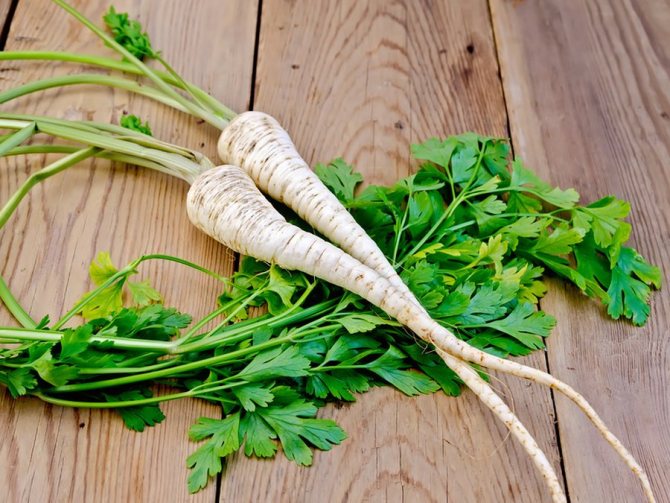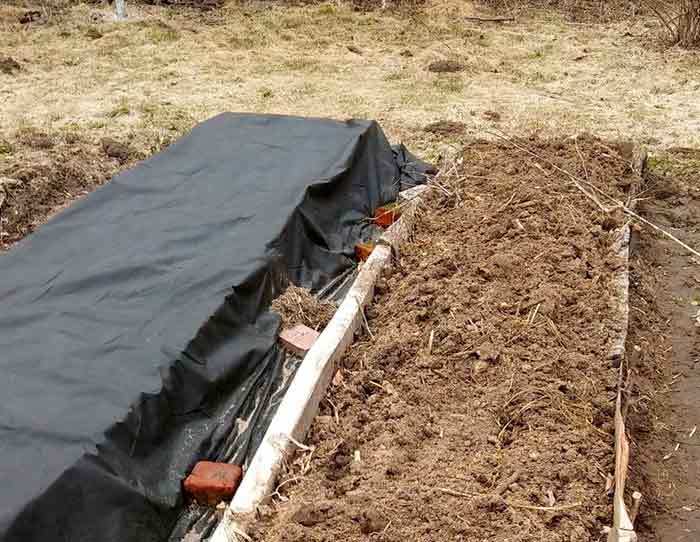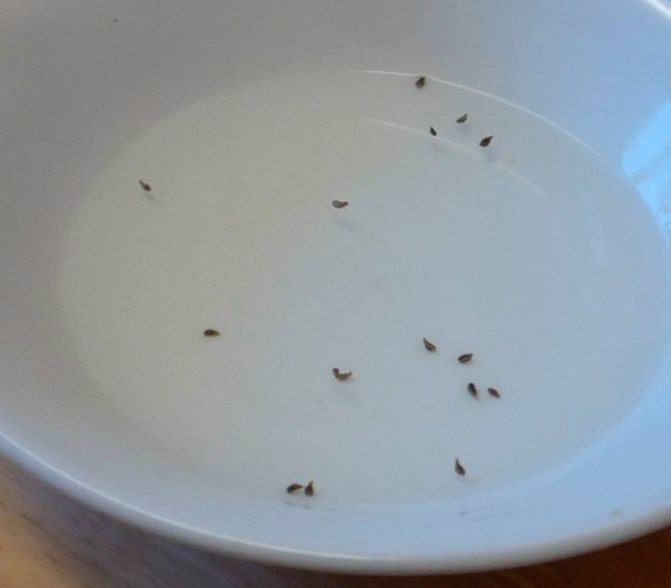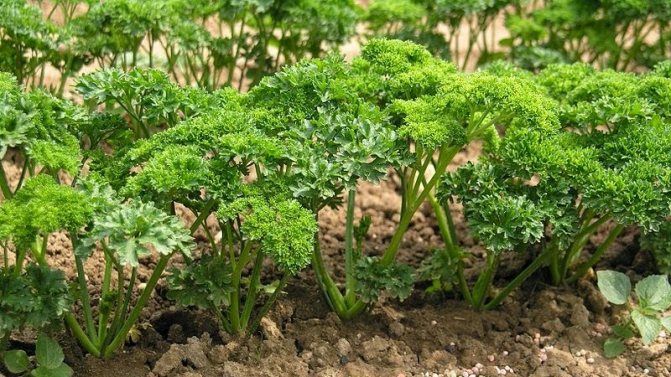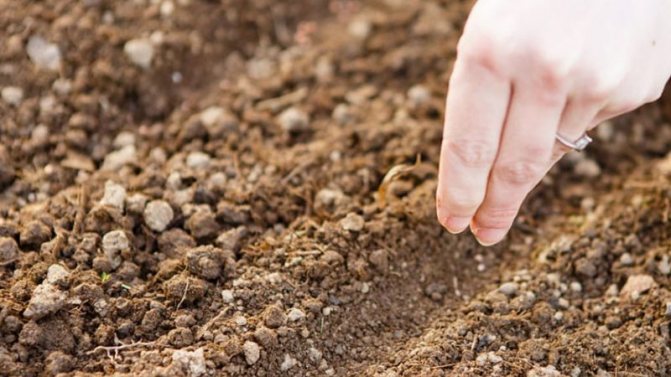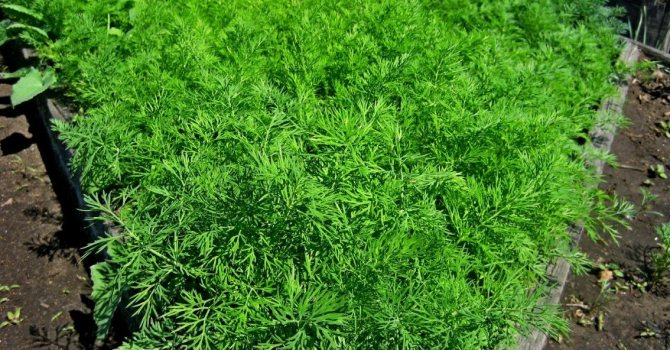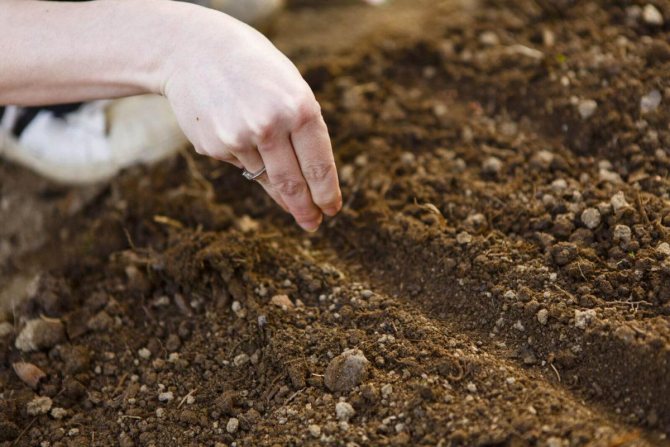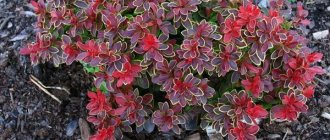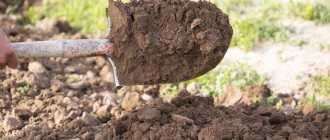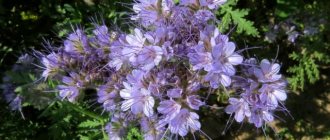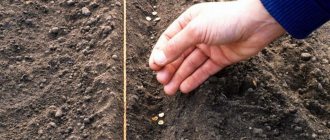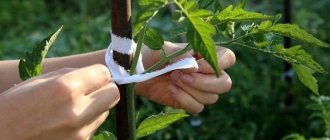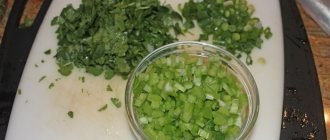Advantages and disadvantages of winter planting
Before proceeding with planting parsley seeds in open ground, any summer resident should wonder about the time of this event. Traditionally, only two types of crop planting are practiced - in spring and autumn before winter. There is no significant difference between spring and winter crops.
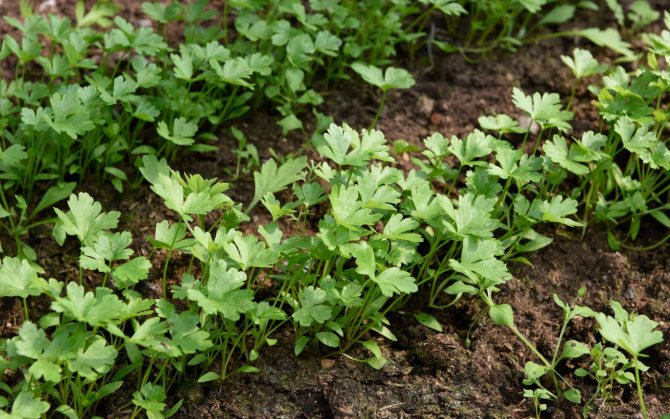
However, the second option, for many reasons, is considered more profitable and more popular among experienced gardeners. Contrary to popular belief, parsley is very cold-resistant and easily tolerates frost, therefore, planting winter crops will not cause any harm to crops or seedlings.
- Other benefits of the technology include the following:
- the possibility of getting an early harvest;
- high resistance of winter crops to diseases and low temperatures;
- significant acceleration of seedling growth;
- the possibility of reusing the garden;
- simplification of agrotechnical work for the care of the crop;
- saving time and labor resources.
Parsley seeds planted during the cold season are characterized by more vigorous growth and the formation of strong, hardened plants. Taking into account the other features and good immunity of this crop, most gardeners recommend and actively practice winter planting themselves. However, this method also has negative sides that cause certain difficulties for novice gardeners.
- These most often include the following:
- the difficulty of accurately determining the timing of sowing;
- changeable and unpredictable weather conditions;
- the risk of seeds freezing;
- limited storage periods and the inability to transport the crop.
All these disadvantages and risks can be easily minimized if you take a responsible approach to this procedure and use the already proven recommendations and tips for planting and further caring for plants.
Important! The best crop precursors are cucumbers, potatoes, cabbage and carrots. However, after parsley, these crops should be planted in their original place no earlier than 3 years later.
Popular varieties for winter cultivation
Not all varieties of vegetable crops are suitable for planting before winter. The most common greens with early and medium ripening:
- root parsley Russian size with snow-white pulp and sweetish taste of the underground part of the plant;
- Eagle variety, unpretentious to care for, with a lush leaf rosette;
- common parsley, frost-resistant, with lush greenery;
- Mid-season Italian giant, rapidly growing large green leaves;
- Esmeralda variety of curly parsley.
Choose varieties in accordance with the purpose of the vegetable crop, resistance to low temperatures and diseases.
When to plant parsley before winter
Inspired by the benefits of winter planting, inexperienced gardeners often make the most common and dangerous mistake - they choose the wrong timing for sowing seeds. In an effort to sow seeds into the soil as quickly as possible, gardeners contribute to their premature germination, as a result of which the sprouts die at the first frost. In order for the culture to give friendly and healthy shoots in the spring, it is best to focus on late autumn - late October - early November.
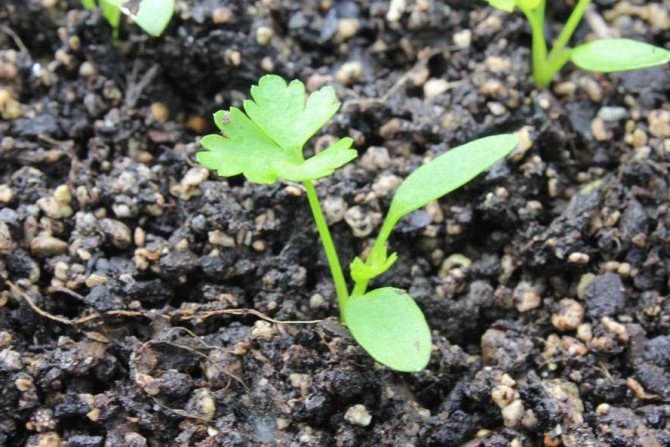

However, in the case of prolonged warm or rainy weather, the planting dates should be postponed until the final establishment of cold weather. You can determine the most suitable time to start work when the soil is ready - it should freeze at least 2-3 cm. The daytime temperature during this period should not exceed + 2 ... + 3 degrees - the seeds planted at this time will be protected from premature germination and ensured the most comfortable conditions.
Dill varieties for autumn sowing
One of the key factors for a rich harvest of greens in the autumn planting option is the correct choice of seeds. The priority is for early-maturing crop varieties, which are characterized by intensive development and resistance to stemming.
Dill varieties for sowing before winter:
- Aurora. An early maturing bush variety with a high yield. Openwork greens with a rich aroma are ready for cutting 3 weeks after germination;
- An early miracle. It ripens within a month after the emergence of sprouts, during this period it grows up to 30 cm. It is highly resistant to unfavorable climatic conditions;
- Grenadier. Early ripening variety, unpretentious to growing conditions. The fragrant green mass is ready for use in 30-35 days after germination;
- Gribovsky. Produces abundant foliage with a bluish tint, which is ready to be cut within 30-40 days after sprouting. The variety is capable of stably well tolerating low temperature conditions;
- Umbrella. Ripens in 35-40 days, is resistant to temperature extremes, high-yielding variety.
For planting dill before winter, it is also recommended to use mid-season crop varieties, as well as late ripening, in order to ensure the constant presence of fresh spicy grass with delicate foliage in the beds:
Read also: Mini goat farm
- Vologda lace. Differs in high resistance to stalking and neutral reaction to abnormal climatic conditions. Ripening time - 40-45 days;
- Alligator. A bush culture, capable of giving a bountiful harvest, since it does not form umbrellas for a long time, is ready for cutting within 40-45 days;
- Kibray. It has large rosettes up to 40 cm in height, maturity occurs in 40-45 days, has the ability to not form umbrellas for a long time. The yield of the culture allows you to collect up to 3 kg of green mass from 1 m²;
- Anna. Mid-season variety with very fragrant greens, ripening period - 45-50 days;
- Boreas. Tall variety - up to 140 cm - late ripening, stands out by the absence of yellowing of the foliage, ready for use in 50-55 days;
- Firework. Late-ripening culture, ripens 2 months after the emergence of shoots, practically does not shoot, leaves do not turn yellow;
- Buyan. A powerful shrub plant of a late ripening period, the greens begin to be cut 60-70 days after germination, the foliage stands out with a bluish tint and a waxy bloom.


Dill Vologda lace
Late-ripening versions manage to grow precisely by the period when the early-ripening ones are already in the "umbrella" stage and the foliage coarsens.
When choosing a variety of dill for winter seeding, a number of nuances should be taken into account:
- you need to know how long the selected planting material will emerge;
- early ripening versions grow faster than later varieties, but they do not tend to build up a lush mass with dense foliage;
- in ultra-early versions, the stem is quickly formed;
- bush-type dill seeds tolerate frosts well, these crop samples slowly form a stem.
When choosing a seed for growing winter dill in the country, it is worth knowing that among the popular solutions such varieties as Salut, Kibray, Umbrella are most often noted.
How to properly plant parsley before winter
Moving on to the most responsible and important part - sowing seeds in open ground, special attention should be paid to the weather conditions of the region - in the Moscow region, for example, the winter planting of parsley is usually practiced after the temperature is set from +3 to +4 degrees. It should be noted that the autumn planting of parsley involves the use of a large number of seeds - experienced gardeners add about 30–35% to the usual rate.
It will be interesting for you to learn about the peculiarities of sowing dill and parsley before winter.
This is done in reserve, since none of the existing methods of increasing the germination of seeds does not guarantee their preservation by 100%. The technology of planting greenery in autumn is not much different from the same procedure in spring - a significant difference is observed only in the distance between the grooves.
General recommendations for planting winter parsley are as follows:
- The film, which was covered with the top of the bed, must be set aside, and it is recommended to cover the bottom of the grooves with a thick layer of sand, which helps to preserve the seeds.
- Next, the seeds are carefully placed in the furrows and sprinkled on top with a previously prepared dry nutrient substrate, which is subsequently compacted.
- To avoid the formation of a "soil crust" that prevents the full development of plants, mulching of the soil is mandatory - peat or humus is best suited for this purpose.
- In case of prolonged rains, the bed must again be covered with foil to protect the seeds from premature moisture. As soon as the frost is finally established, the covering material can be removed.


Preparing seeds for planting in open ground
An important factor in obtaining a decent harvest of early spring greenery is the correct preparation of seeds for sowing. Many gardeners fail only because they simply throw the planting material into the ground, without subjecting it to any preliminary preparation. Experienced gardeners also remember well that pre-winter sowing requires a fairly large amount of seeds, since the risk of falling out is greater.
The main stages of the preparatory work:
- sorting;
- soaking and disinfection;
- vernalization or pelleting.
Each of the stages is equally important to success.
At the sorting stage, the seeds are distributed based on their size and general appearance, the presence of damage. Too small planting material may be too weak. At the same time, damaged seeds will rot and do not germinate. Autumn sowing requires special attention to the health of the material.
See also
How parsley is used for the face against age spots, the best recipes and rules for use
To read
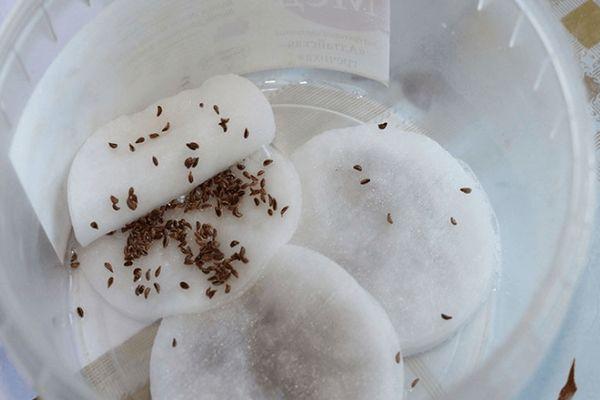

Soaking, combined with disinfection, is carried out both to activate the swelling process and to increase the plant's immunity. In order to prevent parsley from getting sick immediately after germination, it is soaked in a solution of potassium permanganate or boric acid. Copper sulfate is also used.
A modern method of achieving the same goal is bubbling. This is the name of the process in which the seeds are placed in warm water (temperature of 20 degrees Celsius) and oxygen is pumped through a compressor.
Vernalization and pelleting are used in order to ensure uniform sowing and increase the energy of the plant. In the first method, the seeds are kept on ice until it evaporates in a wooden box, and in the second, they are covered with a mixture of fertilizers, humus and peat. It is important that each seed is in such a substance separately.
Winter parsley care in the spring and summer
Caring for parsley planted in autumn will not be difficult - it is enough to carry out standard agrotechnical work in a timely manner. These include watering, fertilizing, loosening the soil and regularly removing weeds. When the first shoots appear in the spring, experienced gardeners recommend covering the parsley with a transparent film - this way the crops will favorably survive the aggressive effects of the environment. As soon as 2-3 true leaves become visible on the sprouts, the parsley will need to be thinned out.
Experienced gardeners usually carry out this procedure twice - the first time in order to form the beds, on which the strongest and healthiest sprouts should remain, and the second - after the appearance of 6-7 leaves.Then the distance between the rows is significantly reduced to 5–6 cm. In addition to thinning, the culture also needs to loosen the soil - however, it is worth starting this procedure only after the establishment of stable warm weather. In this case, it is necessary to carefully monitor the structure of the soil - it should not be overly dense.
How the timing depends on the place of growth
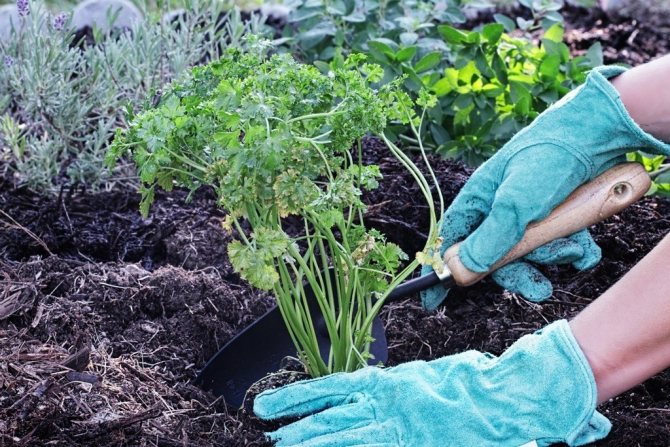

Planting dates before winter will largely depend on the region of residence. There are several climatic zones on the territory of Russia. In the southern regions with a warmer climate, the appropriate time comes later than in the Moscow region, the middle lane and in the Urals. In Siberia and in the north, winter comes much earlier.
It is worth navigating by the weather and waiting for the establishment of subzero night temperatures - 2 C below zero. The ground should be covered with a dense crust. It is better to plant parsley with seeds in clear weather at sub-zero temperatures. If in autumn it is warm and frosty, then you should wait until the beginning of December.
Important!
The bed must be located in an open space, where there will be a lot of sun in the spring. The shady side won't do.
Possible diseases and pests
Like any crop, parsley is also susceptible to attack by dangerous diseases and pests that can significantly reduce the yield and cause a lot of trouble during treatment and care. The most harmful ailments of the culture are rust, powdery mildew, white leaf spot and black rot. Most of them affect parsley in any growing season.
We recommend that you learn about the beneficial properties of parsley root.
However, the symptoms for each disease are individual:
- Rust on parsley it is easy to recognize by the characteristic yellow-brown spots that appear on all above-ground organs of the plant.


- Powdery mildew is considered one of the most pernicious ailments, widespread everywhere, and manifests itself most often on the leaves, inflorescences and stems of plants in the form of an unpleasant whitish coating. Later, it will take on a dark gray color, and the affected parts of the parsley will become tough, brittle and unusable.
- White spot, or septoria, It mainly affects plant leaves, although seeds can also be infected. On both sides of the leaf plates, spots of various sizes and shapes appear, after a while transforming into mushroom pycnidia in the form of small black dots. With a high degree of damage, the disease can spoil up to 70% of the crop.
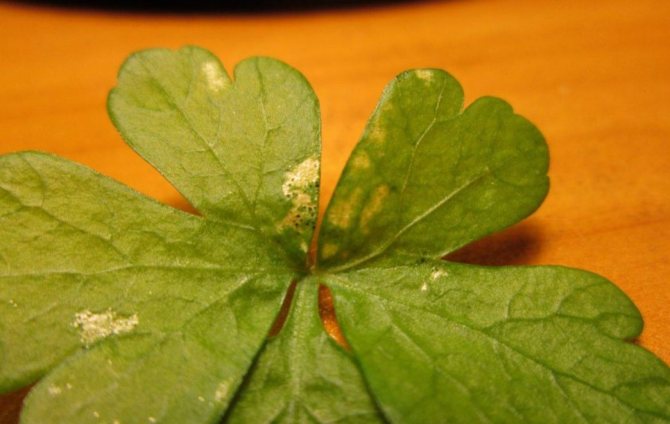

- For black rot characteristic damage to the roots of the plant, which quickly spreads to the rest of the organs of the plant. The development of the pathogen is facilitated by high temperature and humidity - when warm weather is established, the roots and leaves begin to rot rapidly, becoming covered with an unpleasant black coating.
As for pests, the most common of them are carrot flies, carrot flies and melon aphids. Plants damaged by these insects significantly lag behind in growth, their surface is covered with a painful purple color, and the leaves rapidly turn yellow and dry out. There are also frequent cases of curvature of the stems, by the unnatural appearance of which it is easy to determine the invasion of parasites. Only preventive measures aimed at creating comfortable and favorable conditions for parsley will help to prevent the appearance of misfortunes, namely:
- regular inspection of crops for signs of damage;
- weed control;
- thorough cleaning of the site from plant debris;
- compliance with crop rotation;
- timely removal of diseased specimens;
- compliance with the rules of watering, soil cultivation and the introduction of microelements.
You will be interested to know how to tell the difference between parsley and cilantro.
What dill loves, choosing a place in the garden
Dill is not capricious.This plant is cold-resistant (withstands slight frosts, and the seeds begin to revive in the ground at a temperature of +3 ° C). If you want to achieve a good harvest of green spice, it is necessary to take into account what dill loves, and the correct cultivation of dill presupposes the creation of favorable conditions for it.
Important!
Adding frozen dill to salads will ruin the dish - an unpleasant herbal taste and wateriness will appear. Dried (salted) dill will give a pleasant smell and taste to salads. Frozen dill is used in soups and sauces.
Lighting for dill
How to sow dill correctly? There is nothing complicated about it.
First, you need to provide the right lighting. Bright sunlight is what dill loves.
Open areas are suitable for him. With enough light, dill has an emerald rich color, it develops normally. Ideal conditions - sunlight 12 hours a day at temperatures ranging from 18 to 25 ° C.
Secondly, you will need to ensure the availability of the right soil.
What soil does dill prefer?
When choosing a site for planting dill, it should be borne in mind that the plant prefers neutral soils with good ventilation and hygroscopicity. Dill does not require special soil fertility (for planting it, areas where cabbage, cucumbers or other vegetables were previously grown are suitable - last year's top dressing will be enough for an unpretentious plant).
It is best to prepare the dill beds in advance (preferably in the fall).
You need to dig up, apply fertilizers (you can fertilize with manure, urea, superphosphate or potassium salt - at the rate of 20-30 g per square meter). Such feeding of dill will help to harvest a large crop.
Sometimes dill begins to change color to yellow-green, its growth slows down. These are signs of nitrogen starvation of the plant. The remedy for this is the introduction of nitrogen fertilizer (20 g per square meter).
Harvesting and storage
Harvesting the crop depends on the further purpose of its use - it can be freezing, drying, salting, or harvesting in oil. This procedure is carried out as the plants mature and are necessary. In order to get a more flavorful raw material for drying, it is necessary to stop watering a few weeks before harvesting it. If parsley is grown for instant consumption, then the irrigation regime is observed in such a way that soil moisture remains at the level of 75–80%. Parsley roots are usually stored in small wooden boxes filled with sand or sawdust, after which they are rearranged in a cool, dark room.
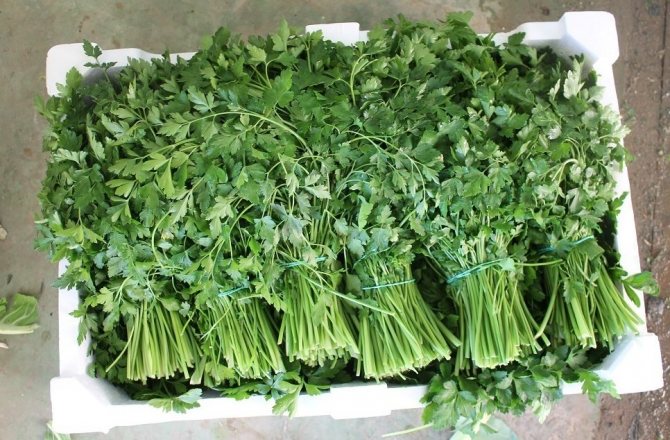

The shelf life of a culture directly depends on the method - as a rule, it varies from several weeks to six months, during which you can enjoy delicious and juicy spice, adding it to various dishes. Planting parsley before winter is a rather profitable and fairly simple procedure, available even to novice gardeners. By practicing winter planting of culture, you can achieve the desired emerald greens in record time, and delight yourself with this fragrant seasoning throughout the cold season.

